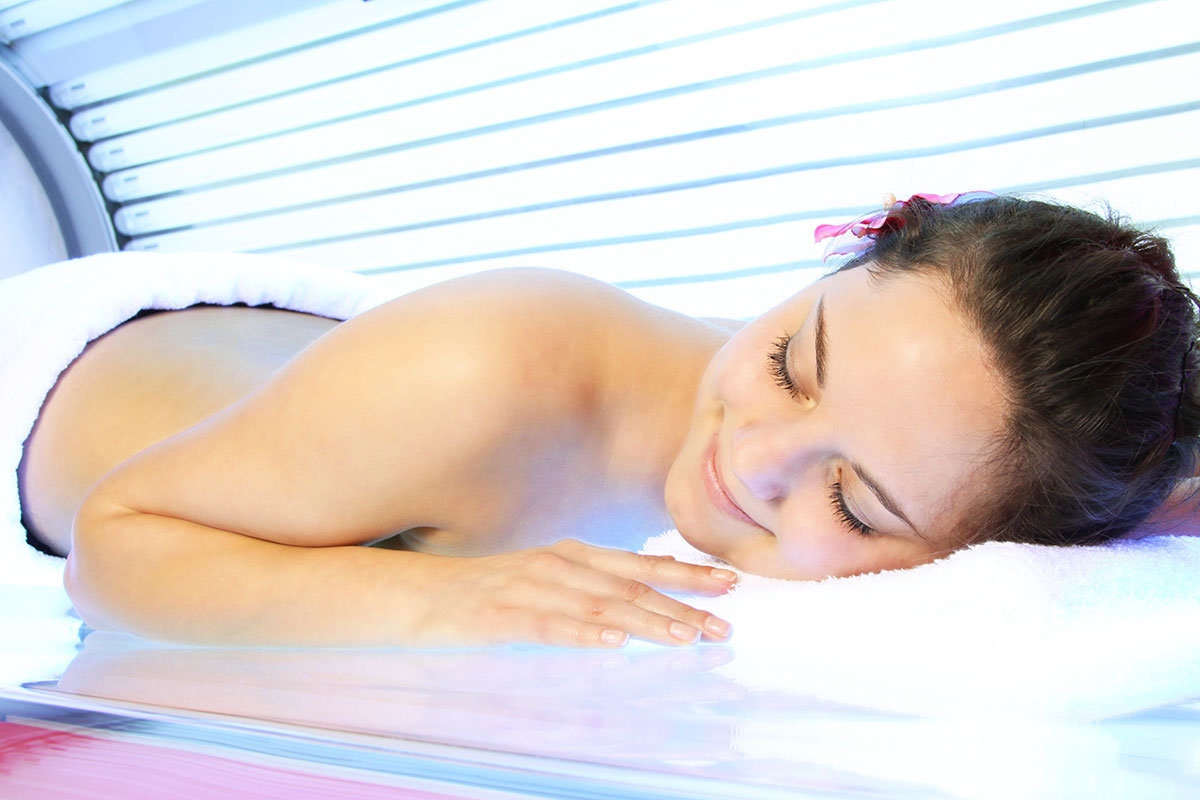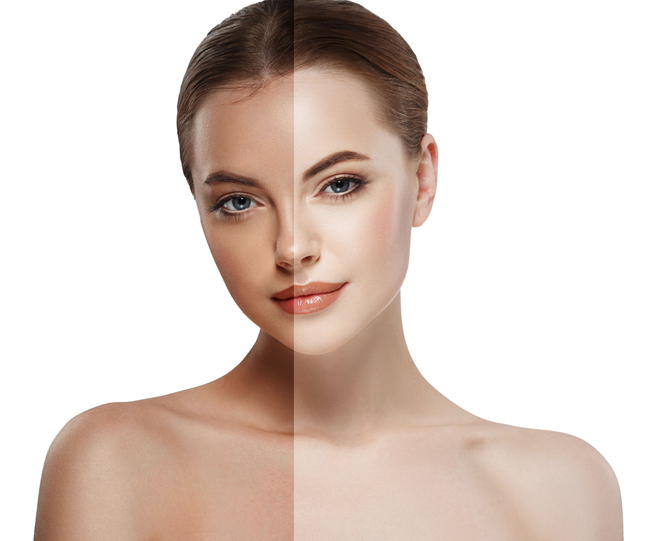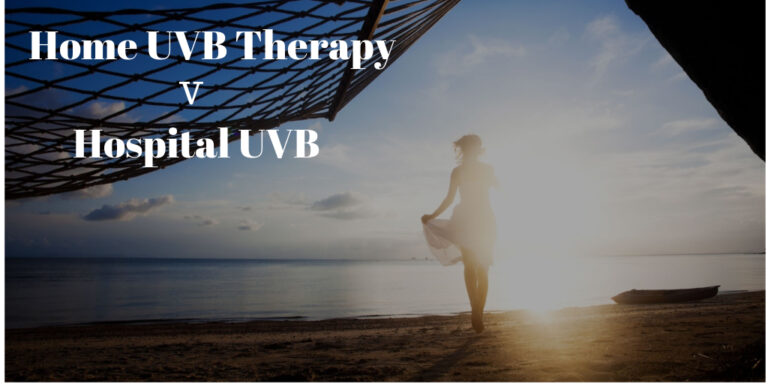Guide: How do sunbeds work?
What is a Sunbed?
According to the Cambridge Dictionary, a sunbed can be defined as
“a structure like a bed, containing a device for producing light, that you lie on in order to get a suntan”
Basically, it’s a unit that you use to get a tan by mimicking the UV rays emitted by the sun.
How does a sunbed work?
Regardless of which type of sunbed you use, they all work in the same way; copying what the sun does when you’re sunbathing – emitting ultraviolet (UV) radiation. When skin is exposed to this radiation, a chemical called melanin is released. As the melanin moves towards the surface of the skin, you get a tan due to the brown-coloured hue becoming more visible.
The UV radiation from the sun is made up of the following 3 wave-lengths;
- UVA (longest)
- UVB (medium)
- UVC (shortest)
Along with light and heat, UV makes up the 3 key solar emissions from the sun.
According to the World Health Organization (WHO), UVA light accounts for 90-95% of the UV radiation that reaches the Earth’s surface as it is not absorbed in the atmosphere. This radiation is capable of penetrating into the deeper layers of the skin and is responsible for the immediate tanning effect.
As UVC radiation is completely absorbed by our ozone, the remaining 5-10% of UV that reaches the Earth is UVB (see European Commission). It is this UV light that has the potential to make your skin burn and appear red.
The key difference when using a sunbed is that while the UV emitted by the sun can vary, the UV emitted by sunbeds remain consistent, usually equivalent to level 12 on the UV Index.
The UV index (UVI) is an international standard measurement of the level of UV radiation. The values start at 0 and increase in intensity, where the higher the UVI value the greater potential there is for damage to the skin and eyes, and the less time it takes for this to happen,
Level 12 is incredibly strong (the UK may achieve level 7 on exceptional days) and is equivalent to the UV rays emitted by the midday sun on the equator.
Also, the make-up of the UV also differs with the new safe tanning 0.3 sunbeds. These sunbeds adhere to the legal requirement and are approved by the EU as well as complying with all British and European consumer safety regulations.
Safe tanning sunbeds produce more UVA (what produces a tan) and less UVB (what can cause skin to burn). Although this does mean that it takes slightly longer to tan, the tan lasts longer, is kinder to your skin, and the risk of over exposure or burning is effectively eliminated.
Please Note:
All of the sunbeds available from Anytime Sunbeds: Sheffield sunbed hire comply to the safe tanning 0.3 requirements.
What bulbs does a sunbed use?
The bulbs used in a sunbed are not the same as your everyday bulbs. Tanning bulbs emit ultraviolet (UV) rays which make your skin produce melanin. Indeed, the UV rays produced allow the melanin to be produced faster than when exposed to the sun.
As well as this, sunbed bulbs may also encourage the production of vitamin D which according to the NHS plays an integral role in skin protection and rejuvenation along with bone health by regulating calcium and phosphate metabolism.
When looking at the bulbs for a sunbed, there are generally two types of bulbs available:
- Regular tanning bulb:
Recommended for tanners with less experience, or those with lighter skin, these bulbs produce 95% UVA and 5% UVB which help build a base tan - Bronzing tanning bulb:
Recommended for experienced tanners, these bulbs produce 98% UVA and 2% UVB which speeds up the tanning and deepens a base tan
Furthermore, as areas of the body do not tan at the same rate, some sunbeds include bulbs designed to tan the face and arms more quickly than the rest of the body by using stronger UV rays
Typically, sunbed bulbs last for approx. 1,000 hours. However, while they may continue to light up, the effectiveness of the bulb will degrade, meaning that the time required to get the same tan will increase.
Based on this degradation through use, most sunbed bulbs have usually lost their potency once they have reached 500-800 hours of use and need replacing. When replacing the bulbs, it is recommended that all of the bulbs are replaced in the unit to avoid uneven light potency which may affect the final tan.
How do I tan safely on a sunbed?
The first step in using a sunbed safely starts with knowing your skin type and tanning abilities. Knowing your skin type will allow you to determine the amount of natural protection you have against ultraviolet light (UV), how many sessions are needed to establish a base tan, and how long each tanning session can last
According to the Fitzpatrick skin photo type (FSP) which looks at the constitutional colour and the effect of exposure to ultraviolet radiation, skin can be classified as one of the following
| Skin Type | Typical Features | Tanning Ability |
| 1 | Pale white skin, blue/green eyes, blond/red hair | Always burns, does not tan |
| 2 | Fair skin, blue eyes | Burns easily, tans poorly |
| 3 | Darker white skin | Tans after initial burn |
| 4 | Light brown skin | Burns minimally, tans easily |
| 5 | Brown skin | Rarely burns, tans darkly easily |
| 6 | Dark brown or black skin | Never burns, always tans darkly |
How long do I need to stay on a sunbed to get a tan?
The recommendation for sunbed usage depends on your skin type (see the FSP chart above). From this, the recommended usage levels can be seen below.
| Skin Type | Sunbed Tanning Session |
| 1 | It is strongly advised that those with FSP level 1 do NOT use a sunbed due to high risks of burning and thus, skin damage |
| 2 | It is recommended that those who are FSP level 2 spend no more than 5 minutes on a sunbed per session. |
| 3 | As burning is still a possibility those who are FSP level 3 must take care and build up their exposure gradually, with a maximum of 10 minutes |
| 4 | Those who are FSP level 4 should not exceed a maximum usage of 15 minutes per session is suggested for this complexion however it’s also important to be cautious on initial exposure as the first sessions should be moderate to avoid skin damage. |
| 5 | FSP level 5 skin types should spend no more than 20 minutes per tanning session, however, like FSP Level 4, it is strongly advised to exercise precaution during initial exposure. |
| 6 | Those with a skin type of FSP Level 6 should not exceed a maximum exposure of 22 minutes. However, it is still recommended to begin with moderate exposure to avoid skin damage. |
Apart from FSP Level 1 who should not use a sunbed at all, all other FSP skin types are OK with 2 – 3 sessions per week, ensuring that your skin is rested for a minimum of 48 hours for those with FSP level 2 and 24 hours for all other FSP levels between each tanning session
After the tanning session, your skin will continue to tan and produce melanin for at least another 12 hours. Therefore, it is important to look after your skin before the tanning sessions and afterwards,
Please Note:
Depending on the chosen sunbed, you may need to turn over in order to expose both the front and back of your body to the light.
However, in all cases, you MUST wear goggles (we provide these free of charge) to ensure that your eyes are protected







